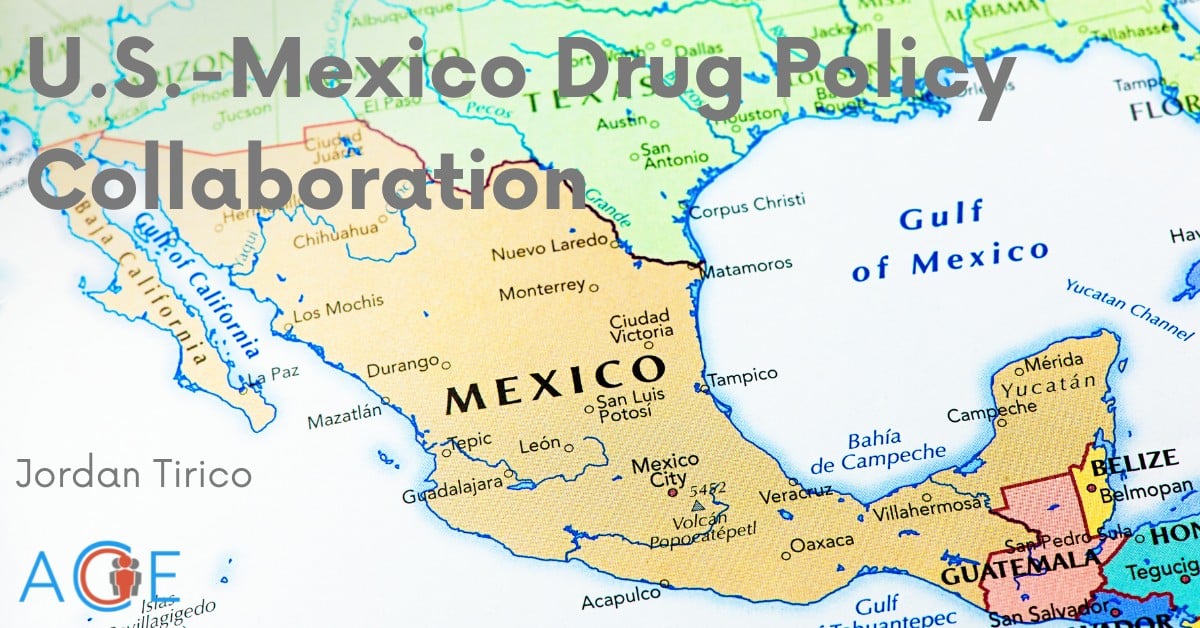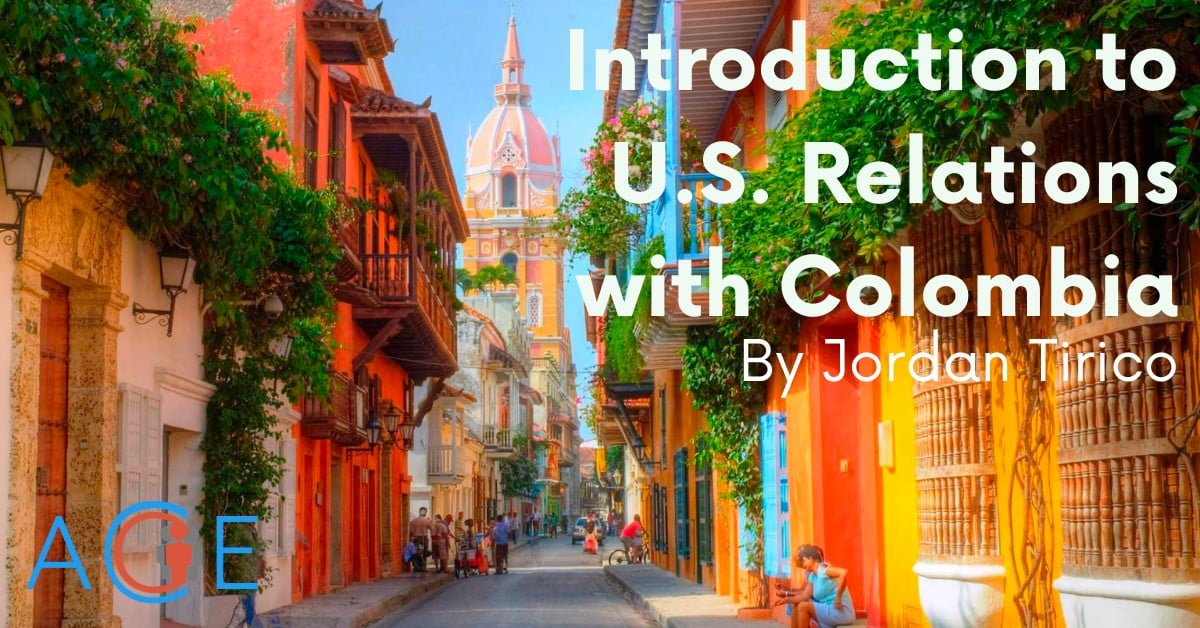Introduction
The U.S. is the leading consumer of illegal drugs in the world. The rate of drug overdose deaths in the U.S. was close to 320 per million residents in 2021, while the average for G20 nations was 23.8 per million residents. The border shared between the U.S. and its southern neighbor Mexico is the entryway for many of these illicit drugs. In 2020, Customs and Border Patrol (CBP) agents seized over 266 tons of illicit drugs (cocaine, heroin, marijuana, methamphetamine, fentanyl, etc.) at points of entry along the border.
Stopping this flow of drugs is a policy priority for both the U.S. and Mexico. In 1914, the U.S. passed the Harrison Narcotics Act, the first major legislation to regulate the distribution and sale of narcotic drugs. This marked the beginning of drug enforcement cooperation between the U.S. and Mexico. By the end of the 20th century, supplying the increasing demand for illicit drugs in the U.S. became the business of powerful Mexican drug trafficking organizations (DTOs), popularly known as cartels. These organizations and their violent tactics have become a threat to both countries. Mexican-based DTOs have formally and informally expanded across the border, creating a web of supply chains and control that poses domestic challenges for the U.S. and Mexico alike. This issue has become one of the most important aspects of the U.S. relationship with Mexico and a national security issue.
Early 20th Century Prohibition
Prior to the 1900s, drugs like opium and marijuana traveled freely from areas of cultivation (especially China) to the U.S. due to their unregulated nature. However, the U.S. began to curtail the use of these substances through the Harrison Narcotics Act, and later by the formation of the Federal Bureau of Narcotics (FBN) in 1930. The FBN, led by Harry Anslinger, initiated a campaign to regulate and outlaw these recreational drugs. These efforts culminated in the 1937 Marijuana Tax Act, a bill that de facto criminalized the recreational or medical use of marijuana.
Many of these drugs were imported from Europe, yet with World War II disrupting intercontinental trade, Mexico became a major producer and supplier for the U.S. drug market. The economic incentive to produce illicit drugs grew under prohibition. Opium was particularly profitable for the Mexican economy, and since the demand was almost entirely abroad, trafficking of the drug was mostly tolerated by Mexican authorities. Additionally, opium harvesting was concentrated in the remote Sinaloan highlands, which is prime for cultivation of the poppy plant (the natural base for opium and heroin) and far from the reaches of federal oversight.
The War on Drugs and Operation Intercept
One of the many cultural changes that rocked the 1960s was the increase in recreational drug use, especially amongst American youth. The conservative response to this counterculture movement was embodied politically by Richard Nixon, and especially by his declaration of the “War on Drugs” in 1971. The roots of this anti-drug focus can be traced two years prior to Operation Intercept, the 1969 drug enforcement policy that jolted the Mexican government into developing a capacity for domestic drug enforcement.
Thousands of U.S. agents spread across the entire U.S.-Mexico border and inspected all passing vehicles for evidence of illicit drugs. This led to catastrophic backups in cross-border traffic, negatively impacting the Mexican public and government officials alike. Intercept was planned unilaterally, with the intent of forcing Mexico to take action within its borders and on its own accord. The policy did not curtail the amount of drugs trafficked from Mexico to the U.S., but it did force Mexico into action. Traffic disrupted licit trade and caused headaches for residents of both nations, and Intercept was halted after only 17 days. Since then, the Mexican government has been a willing partner with the U.S. in drug enforcement operations.
Operation Condor
By 1975, enforcement measures were not going as planned. Mexico was supplying up to 87% of the heroin entering the U.S., and the two countries needed a reset in drug enforcement collaboration. A series of joint operations, culminating in Operation Condor, was the answer.
Mexico, supplied with U.S. military-grade helicopters and aircraft, began a campaign of crop eradication, targeting fields in the states of Sinaloa, Durango, and Chihuahua, known together as the “Golden Triangle”. This region of Mexico is the cradle of opium poppy and marijuana plantations. The mountainous terrain and poor infrastructure make the land isolated and difficult to patrol. However, federal soldiers infiltrated drug-cultivating communities, ultimately arresting and killing many supposed traffickers while receiving accusations of human rights abuse. In total from 1977-87, Condor missions destroyed over 220,000 fields and indicted more than 2,000 criminals, yet the northern stream of drugs did not subside.
This crackdown pushed many of the Sinaloans out of the area, most of whom reconvened in Guadalajara. It also motivated the criminals to organize formally, sowing the foundations for the first Mexican DTOs. Condor’s crackdown finally allowed Colombian cartels to blossom and prosper, initiating the rise of Colombia’s export of cocaine to the U.S.
The Rise of DTOs and the Camarena Incident
As U.S. efforts to intercept contraband from Colombia became successful, the transport routes shifted to Mexico, thereby increasing the power of the Mexican cartels. In 1985, the muder of U.S. DEA agent Enrique Camarena on Mexican soil began a much more violent chapter in U.S.-Mexico drug policy cooperation.
Camarena was tortured and killed because he got too close to the cartels. As is dramatized in the popular television show Narcos: Mexico, the DEA agent was investigating the head of the Sinaloa Cartel, Miguel Angel Félix Gallardo, also known as the “boss of bosses”. Camarena’s torture and murder was a turning point in U.S.-Mexico drug enforcement collaboration. The ensuing crackdown led to a dissolution of Mexico’s federal police force, and major kingpins like Gallardo were arrested or killed.
A year later, in 1986, U.S. President Ronald Reagan signed the National Security Decision Directive, which allowed the Department of Defense to engage in anti-smuggling activities on the U.S.-Mexico border while classifying drug trafficking as a national security threat. Cooperation on military training began about a decade after, when U.S. and Mexican defense officials agreed to open the bilateral relationship to military support.
By the late 1990s, DTOs controlled nearly the entirety of the supply chain. Cartels were willing to resort to brutal violence for the control of profitable territory, demonstrated by the Camarena incident and subsequent uptick in drug-related homicides. This era would be a preview of the first two decades of the new millenia, when cartel violence exploded to even higher levels.
President Calderón and the Mérida Initiative
Rampant globalization during the late 20th century ushered in new challenges for bilateral drug cooperation. Drugs began to enter the U.S. through more routes and the violence between DTOs only grew. President Felipe Calderón was elected during this period of strife and insecurity, and declared war on the drug cartels eight days into his term.
Perhaps politically motivated after a contested election, Calderón’s “war” was no bluff. His initiative against the cartels raised the level of violence in the country. By 2011, up to 96,000 soldiers were combating cartels. Decapitation tactics—eliminating the kingpins at the top of the cartels—were the primary strategy during Calderón’s initiative. U.S. support from DEA agents were essential, providing crucial support in many high-profile arrests like that of Joaquín “El Chapo” Guzmán.
Beyond the services of federal agents, the U.S. was a major actor during this period of drug enforcement. The U.S. and Mexico signed the Mérida Initiative in 2007 to solve the evolving challenges facing drug enforcement. Between 2007 and 2010, the U.S. provided Mexico about $2 billion in equipment, aircraft, technology, and training through Mérida, funding supply-side counternarcotic efforts such as interdiction and eradication of crops. These tactics proved ineffective at slowing drug usage in the U.S., and incited higher levels of violence in Mexico. Calderón’s offensive against the cartels initiated an increase in fighting between rival gangs and security forces, leading to an estimated 47,000 to 70,000 deaths. Under former President Obama, Mérida took on a modified approach, focusing more on training judges and prosecutors.
Looking Forward
In October 2021, the U.S. and Mexico announced the end of the Mérida Initiative, and the beginning of the “Bicentennial Framework for Security, Public Health, and Safe Communities.” This new collaboration focuses on promoting human rights and providing economic alternatives to organized crime. The agreement is a welcomed return to policy collaboration between the two countries, which was soured in 2020 by the arrest of a former Mexican defense secretary in Los Angeles on drug charges. The focus of the Bicentennial Framework is ostensibly aligned with current Mexican President Andrés Manuel López Obrador’s “hugs not bullets” approach to drug enforcement. However, many commentators have noted the expansion of Mexico’s military deployment within the country, rising from 69,000 to 125,000 troops since he took office in 2018.
The Bicentennial Framework is the most recent iteration of a decades-long policy focus between the U.S. and Mexico, which despite intense effort from both nations, has not led to long-term success. In fact, the statistics on drug use in the U.S. and violence in Mexico reveal a dispiriting report card. Homicides in Mexico during 2021 were over 43,000, four times higher than the rate when President Calderón’s war on cartels began in 2008 (14,000). In late 2021, the U.S. reached the grim milestone of 100,000 overdose deaths annually, nearly three times more than the rate of overdose death in 2008 (36,000). These two statistics indicate the most important drug policy issues in both countries: for the U.S. it is curtailing the evolving opioid epidemic, and for Mexico it is slowing the violence ravaging parts of the country.


